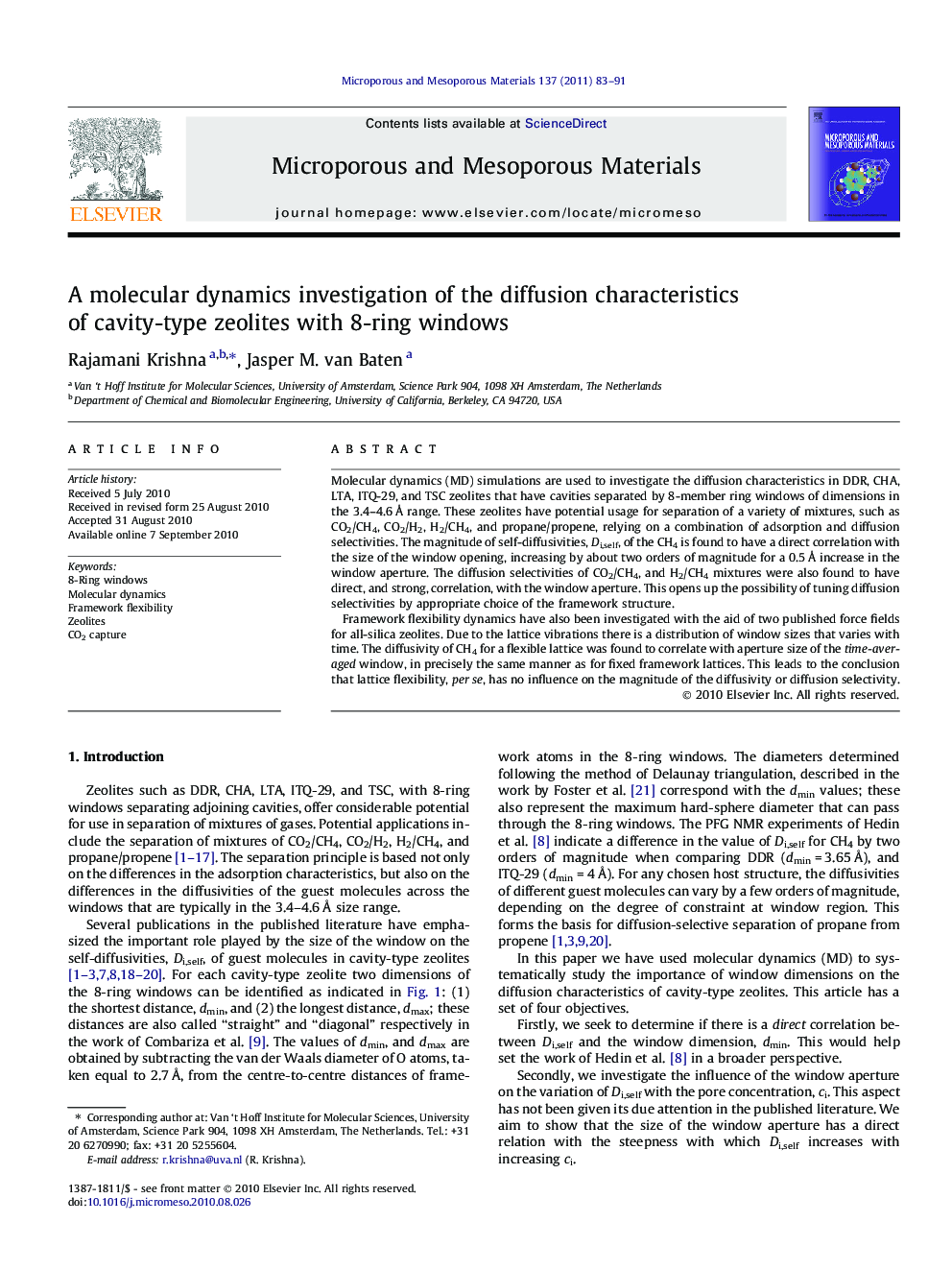| Article ID | Journal | Published Year | Pages | File Type |
|---|---|---|---|---|
| 74989 | Microporous and Mesoporous Materials | 2011 | 9 Pages |
ABSTRACTMolecular dynamics (MD) simulations are used to investigate the diffusion characteristics in DDR, CHA, LTA, ITQ-29, and TSC zeolites that have cavities separated by 8-member ring windows of dimensions in the 3.4–4.6 Å range. These zeolites have potential usage for separation of a variety of mixtures, such as CO2/CH4, CO2/H2, H2/CH4, and propane/propene, relying on a combination of adsorption and diffusion selectivities. The magnitude of self-diffusivities, Di,self, of the CH4 is found to have a direct correlation with the size of the window opening, increasing by about two orders of magnitude for a 0.5 Å increase in the window aperture. The diffusion selectivities of CO2/CH4, and H2/CH4 mixtures were also found to have direct, and strong, correlation, with the window aperture. This opens up the possibility of tuning diffusion selectivities by appropriate choice of the framework structure.Framework flexibility dynamics have also been investigated with the aid of two published force fields for all-silica zeolites. Due to the lattice vibrations there is a distribution of window sizes that varies with time. The diffusivity of CH4 for a flexible lattice was found to correlate with aperture size of the time-averaged window, in precisely the same manner as for fixed framework lattices. This leads to the conclusion that lattice flexibility, per se, has no influence on the magnitude of the diffusivity or diffusion selectivity.
Graphical abstractFigure optionsDownload full-size imageDownload as PowerPoint slideResearch highlights► In cavity-type zeolites the diffusivity of guest molecules correlates directly with the minimum window dimension. ► For CO2/CH4, and H2/CH4 separations the diffusion selectivity correlates with the window dimension. ► Lattice framework flexibility, per se, has no influence either on diffusivity or on the diffusion selectivity.
